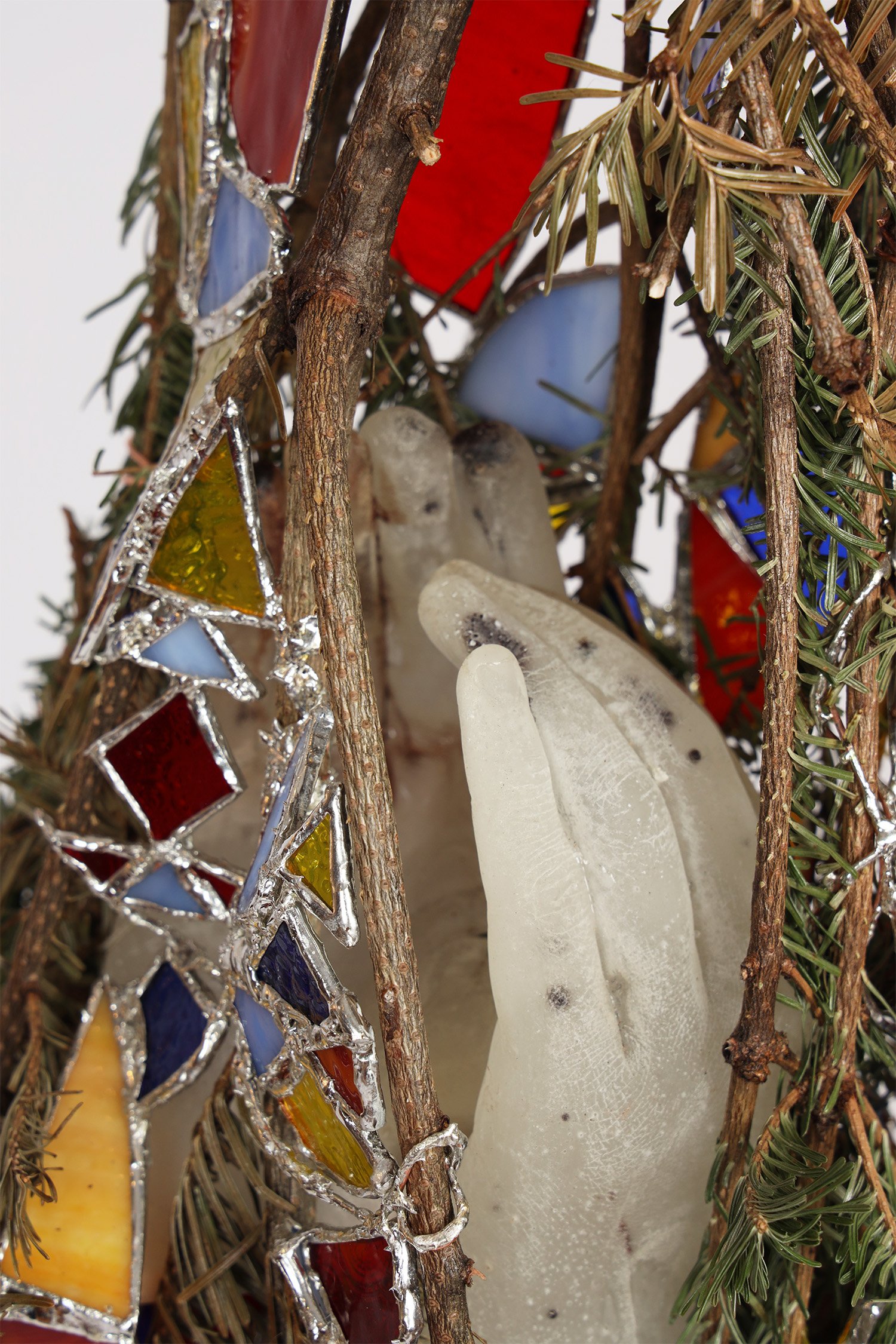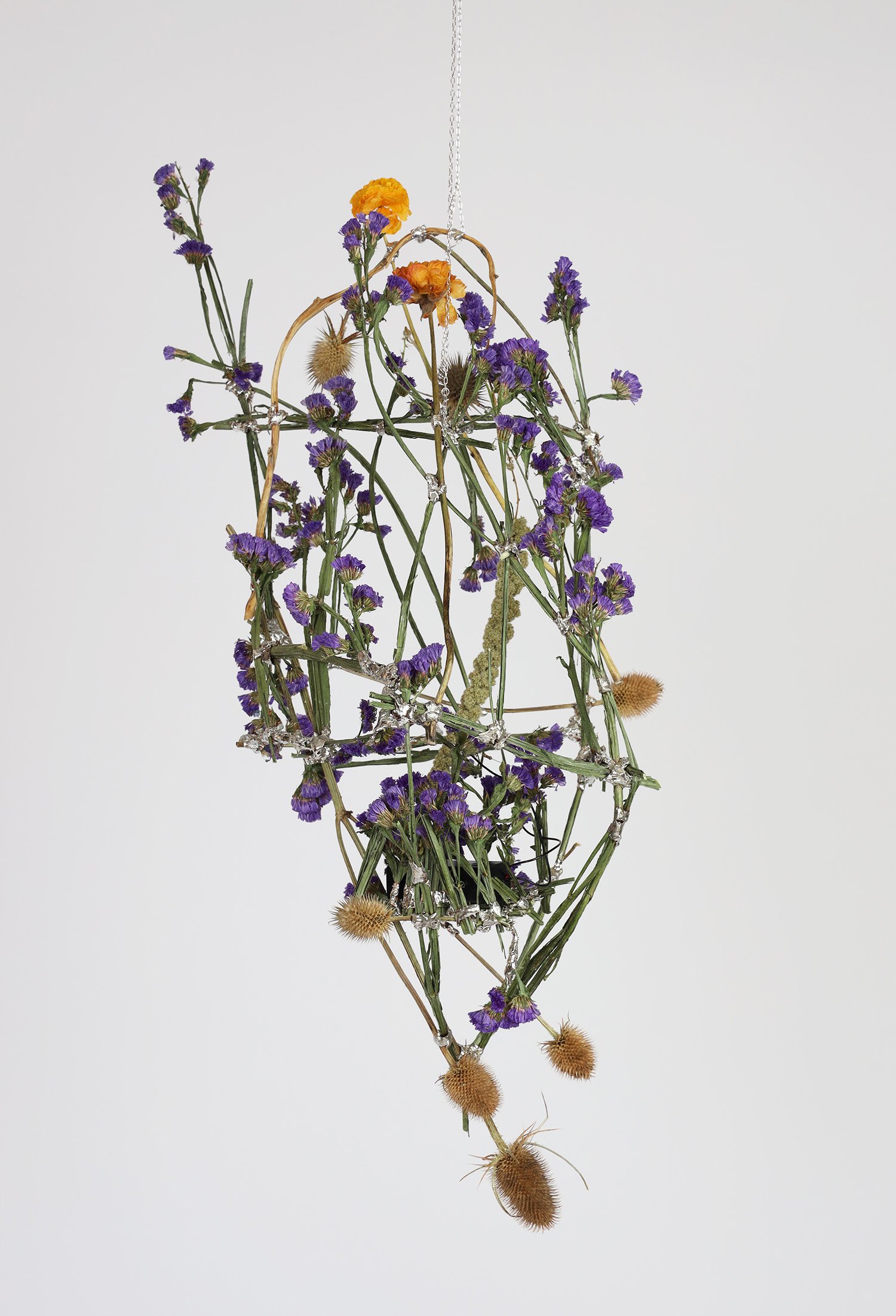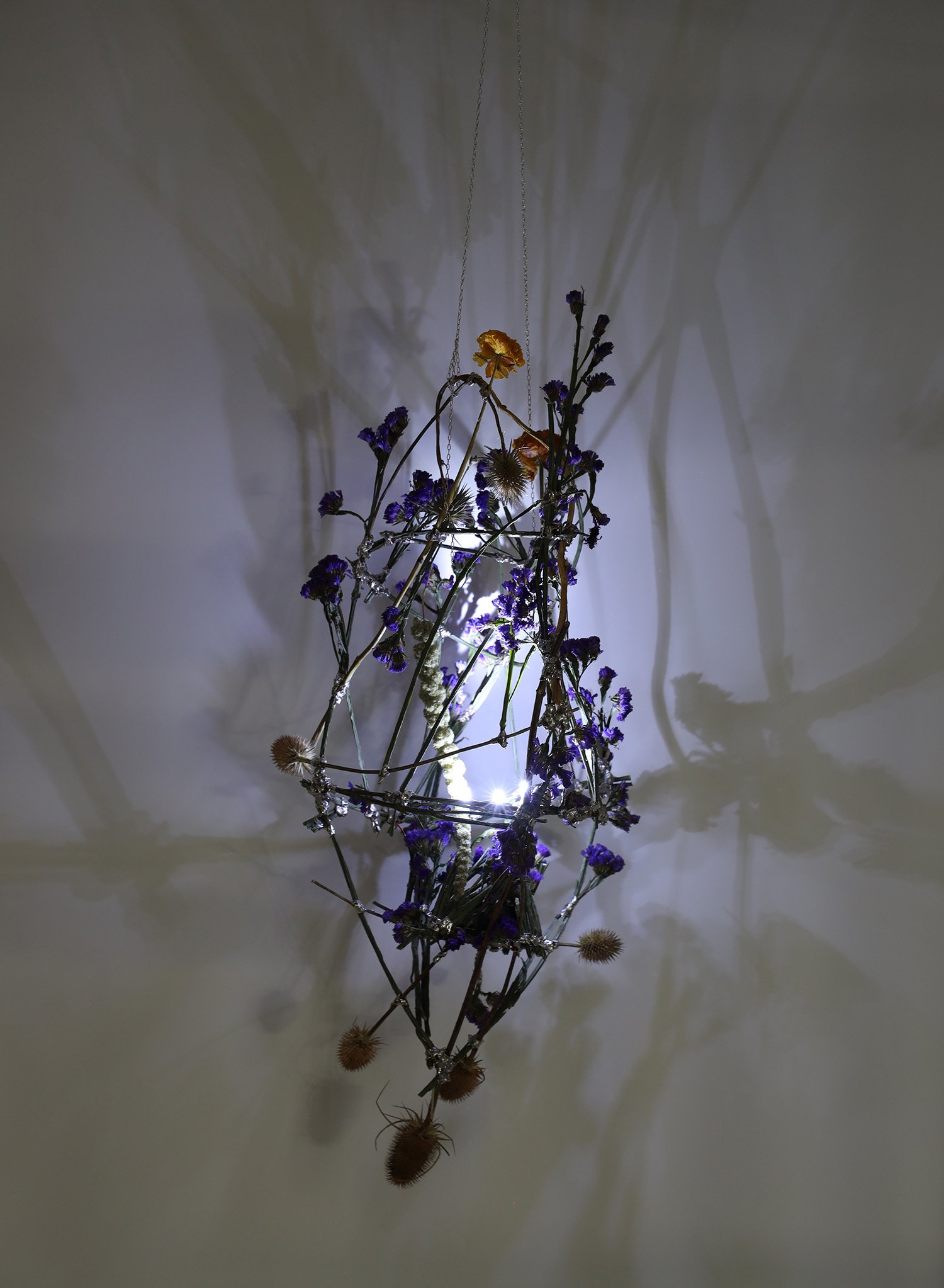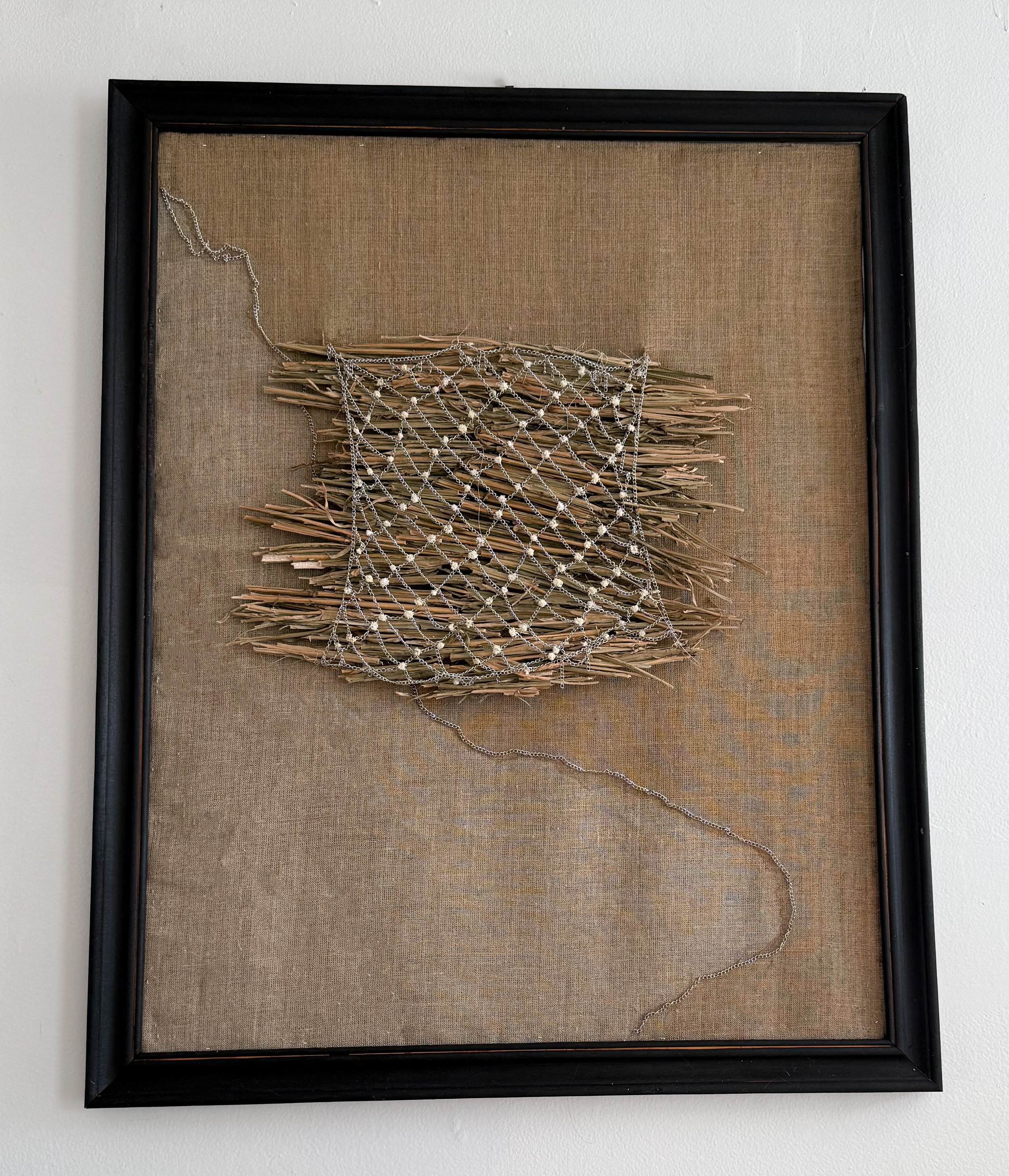ephemeral
Time-based works that mix permanence with impermanence, wilting and decaying.






2025
Vuk, 2025
Carnations, string, porcelain
5 ft x 2 ft x 1 ft
Vuk, investigates how the fragmentation of the natural world mirrors the erosion of cultural identity and memory. To the ancient Poles, the vuk (wolf) was the supreme mythical animal, symbolizing the ferocity of nature. In Vuk, a porcelain wolf head hangs precariously from strings of ranunculus and carnations. Often a symbol of eternal love, carnations also hold symbolic meaning in Poland to the communist time period. As the flowers decay the wolf’s head will fall and shatter, embodying the inexorable collapse that follows creation.
2024
Sharing Blood, 2024
pine, stained glass, silver solder, epoxy resin, copper, blood of the artist, steel
34 x 15 x 12 in
In the tale of Baba Yaga, a young woman is coerced to enter the dark pine forest to retrieve fire from the witch’s hut, learning how to follow and trust her intuition and becoming attuned with her feminine ancestral knowledge.
There is little known about the Slavic pagans, as the Catholic crusades cut down the groves and enslaved or slaughtered those who didn’t convert. One of the few things that is known is that trees were sacred.
In Overlay, Lucy Lippard states “the essence of a culture can be found in the degree of its domination of, or independence of nature.” In this piece, I meditate on how the Catholic crusades re-formed the psyche of Europeans and how it translates to myself as a 3rd generation American today.
The hands in this piece reference Matthew 5:30 in the Bible “And if thy right hand offend thee, cut it off, and cast it from thee: for it is profitable for thee that one of thy members should perish, and not that thy whole body should be cast into hell.”
Sharing Blood symbolically cuts off both of my hands, blood inside, and creates a cocoon for it, something that serves as a healing, motherly agent. It will change and decay, burying my shame and guarding it for as long as possible.
death by a thousand bites, 2024
statice, amaranth, echinacea, ranunculus, silver, solder, LED lights, batter pack, copper
12 x 16 x 9 in
It is thought that the Roman emperor, Marcus Aurelius, wrote parts of his book “Meditations” while waging an unsuccessful war in the marshy Slavic lands of Eastern Europe. In this book he states “All that is harmony for you, my Universe, is in harmony with me as well. Nothing that comes at the right time for you is too early or too late for me.”
death by a thousand bites is a reference to the fading of memory over time and dissolution of culture. The main flower used in this piece is statice, commonly known as sea lavender. This flower is endemic to the Mediterranean and is symbolic for remembering. This sculpture embodies a sense of the temporal aspects of memory and of our natural environment. The work itself has already changed over time, with the bright orange flowers turning white, losing their vibrance. The current viewer can only experience a fraction of what this piece was, and eventually it will disintegrate altogether.
river, upside down, 2024
statice, silver chain, baby’s breath, uncured linen, coffee, burnt wood
22 x 30 in
The Klamath River, dubbed the “Upside Down River” as it flows from the arid desert to the Pacific Ocean, borders Oregon and California, providing water to farm lands and salmon runs for the Klamath Basin Tribes. Between 1918 and 1962 the river was dammed to provide water to the farm lands, and in doing so, dried up the salmon runs. In 2002 alone over 34,000 fish, most of which were adult Chinook Salmon, died in the lower Klamath River. In 2013 the ancestral water rights of the Klamath Tribes were legally recognized. Increased clashes between the farmers and the tribes ensued. In an act of intimidation, some farmers even cut the locks to the dam. From 2024-2025 the tribes spearheaded the largest dam removal project in the United States, removing all four dams from the river. Since then, the salmon have begun to return. River, Upside Down, details the tumultuous recent history of this river.
